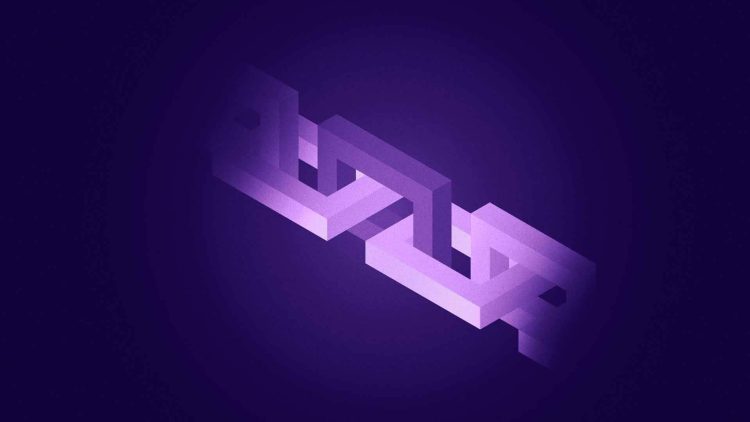As blockchain technology continues to evolve, it has sparked a revolution across industries ranging from finance to healthcare to supply chains. However, despite the enormous potential of blockchain, one significant challenge remains: the lack of interoperability between different blockchain networks. Each blockchain operates independently, and while they share certain characteristics, they cannot easily communicate or share data with one another. This limitation creates barriers that hinder the full potential of blockchain ecosystems.
Enter cross-chain technology—a promising solution to this problem. Cross-chain technology aims to facilitate communication between different blockchains, allowing them to interact with one another and transfer data or assets seamlessly. But can cross-chain technology truly break down the barriers between these siloed networks? And how might this lead to the creation of a seamless blockchain ecosystem in the future? Let’s dive into these questions and explore the potential of cross-chain technology.
What Is Cross-Chain Technology?
In simple terms, cross-chain technology refers to the ability of different blockchain networks to communicate and exchange data or assets directly, without relying on a centralized intermediary. Traditionally, each blockchain operates in isolation, with its own set of protocols, consensus mechanisms, and data structures. Cross-chain technology seeks to bridge the gaps between these separate blockchains, enabling interoperability between them.
For example, imagine you have Bitcoin on the Bitcoin blockchain and Ethereum-based tokens like Ether (ETH) or ERC-20 tokens on the Ethereum blockchain. Without cross-chain functionality, you cannot directly move assets between these two blockchains. Cross-chain technology would allow you to transfer or swap assets between these blockchains seamlessly, unlocking new possibilities for decentralized finance (DeFi), digital asset management, and more.
Why Is Cross-Chain Communication So Important?
The promise of a seamless blockchain ecosystem hinges on the ability to break down the barriers that currently exist between different blockchains. Let’s look at why cross-chain communication is critical for the blockchain ecosystem’s future.
1. Unlocking the Full Potential of DeFi
Decentralized finance (DeFi) has been one of the most exciting applications of blockchain technology. DeFi platforms, built primarily on Ethereum and other blockchains, allow users to engage in financial activities like lending, borrowing, and trading without intermediaries. However, most DeFi applications are limited to a single blockchain, often Ethereum.
Cross-chain technology would open up the possibility of transferring assets and liquidity across different blockchains. For instance, you could use Bitcoin in a DeFi application built on Ethereum, or vice versa, without needing a centralized exchange or intermediary. This would lead to a more diverse and liquid DeFi ecosystem, with assets from different blockchains seamlessly interacting with each other.
2. Breaking the Ecosystem Silos
Currently, blockchain networks operate in silos, each with its own rules and limitations. For example, Ethereum’s smart contracts are different from Bitcoin’s script. While both blockchains are widely used and well-established, they cannot communicate with one another in a meaningful way. Cross-chain communication would break down these silos, enabling assets, data, and smart contracts from different blockchains to work together, enhancing the overall utility of blockchain technology.
By breaking down these silos, we can create a more interconnected blockchain ecosystem, where users can access a wide range of decentralized applications (DApps) across multiple blockchains. This would foster innovation, making it easier for developers to build and deploy applications that interact with various blockchains.
3. Improving Scalability and Flexibility
Different blockchains are optimized for different use cases. For instance, Ethereum is widely used for smart contracts and decentralized applications, while Bitcoin is optimized for peer-to-peer transactions. However, no single blockchain is perfect for every use case. Cross-chain technology allows the interoperability of blockchains with unique features, providing scalability and flexibility for different types of transactions and applications.
For example, a cross-chain network could allow a user to transfer value from one blockchain to another based on factors like transaction fees, processing speed, or security. This would create a more adaptable blockchain ecosystem that can optimize performance depending on the use case, improving the overall user experience.
4. Facilitating Cross-Blockchain Asset Transfers
Another key advantage of cross-chain technology is the ability to facilitate seamless asset transfers between different blockchains. For instance, a user may want to trade Bitcoin for Ethereum or move assets between blockchains to take advantage of price differences or other market opportunities. Traditionally, this would require a centralized exchange or a time-consuming process of converting assets into a common currency.
With cross-chain solutions, users can transfer assets directly across blockchains. This functionality would enable decentralized exchanges (DEXs) to operate more effectively, improve liquidity, and reduce the reliance on centralized exchanges, which are often seen as less secure and more susceptible to hacks.

How Cross-Chain Technology Works
To understand how cross-chain technology can facilitate seamless communication between blockchains, let’s explore some of the methods and technologies that enable it.
1. Atomic Swaps
An atomic swap is a process that allows users to exchange one cryptocurrency for another without the need for a trusted third party. This is done using smart contracts that lock the assets on both blockchains and only release them if both parties meet the conditions. If either party fails to fulfill their end of the deal, the transaction is canceled, ensuring that both parties are protected.
Atomic swaps are a powerful way to enable direct transactions between different blockchains. They allow users to trade Bitcoin for Ethereum, Litecoin for Bitcoin, and so on, all without needing an intermediary. These swaps can be conducted on decentralized exchanges, increasing the security and transparency of the transaction.
2. Blockchain Bridges
Blockchain bridges are protocols that connect two different blockchains, enabling the transfer of assets or data between them. The bridge works by locking up assets on the source blockchain and issuing a corresponding token on the target blockchain. When the user wants to redeem their original asset, the token is burned, and the asset is released from the bridge.
For example, a Bitcoin-Ethereum bridge would allow users to lock Bitcoin on the Bitcoin blockchain and mint an equivalent amount of tokens on the Ethereum blockchain, which can then be used for DeFi applications or trading on decentralized exchanges. This creates a seamless way to move assets between blockchains without the need for a third-party exchange.
3. Interoperability Protocols
Another method of achieving cross-chain communication is through interoperability protocols, which are specialized frameworks designed to enable blockchains to communicate with each other. These protocols act as a layer on top of the blockchains, allowing them to share data and value while maintaining their independence. Some of the key interoperability protocols include:
- Polkadot: Polkadot is a multi-chain framework that allows different blockchains (referred to as “parachains”) to interoperate with each other. By connecting blockchains through the Polkadot relay chain, Polkadot enables a wide range of cross-chain communication and transactions.
- Cosmos: Cosmos aims to create an “Internet of Blockchains,” where independent blockchains can communicate and exchange data through the Inter-Blockchain Communication (IBC) protocol. Cosmos enables developers to build sovereign blockchains that can still interact with other blockchains within the Cosmos ecosystem.
- Chainlink: Chainlink is a decentralized oracle network that facilitates cross-chain communication by providing external data to smart contracts. Chainlink’s Cross-Chain Interoperability Protocol (CCIP) aims to provide a universal framework for enabling secure cross-chain transactions and data exchanges.
4. Layer-2 Solutions
Layer-2 solutions are built on top of existing blockchains to provide scalability and interoperability. By using Layer-2 networks, blockchain platforms can process transactions faster and with lower fees. These Layer-2 solutions can also enable cross-chain interoperability by allowing different blockchains to interact through a common Layer-2 network.
For instance, Polygon is a Layer-2 scaling solution for Ethereum that not only reduces transaction fees but also provides interoperability between Ethereum and other blockchains. By connecting different blockchains through a Layer-2 network, cross-chain transactions can occur more seamlessly and efficiently.
The Future of a Seamless Blockchain Ecosystem
The future of blockchain interoperability is incredibly exciting, and cross-chain technology is poised to play a crucial role in realizing the vision of a seamless blockchain ecosystem. As the various methods of cross-chain communication—atomic swaps, blockchain bridges, interoperability protocols, and Layer-2 solutions—mature, the barriers between blockchain networks will continue to break down.
A fully realized seamless blockchain ecosystem will allow users to interact with multiple blockchains effortlessly, transferring assets and data between them as easily as sending an email. This will foster innovation across industries, from finance to gaming to supply chains, as it enables decentralized applications (DApps) to tap into the full potential of multiple blockchains without being limited by siloed systems.
Moreover, by enabling cross-chain interactions, we can create a more inclusive and democratic internet. Users will have the freedom to choose the blockchain networks that best suit their needs while still being able to interact with a broad range of decentralized applications and services.
Conclusion
Cross-chain technology holds the key to breaking the barriers between blockchains, allowing for a more interconnected, seamless, and efficient blockchain ecosystem. By enabling interoperability between different networks, cross-chain solutions unlock a world of possibilities for decentralized finance, asset management, and digital applications. As these technologies continue to develop, the vision of a truly seamless blockchain ecosystem—where users can interact across multiple blockchains as easily as if they were one—becomes more achievable.
While challenges remain, such as scalability, security, and user adoption, the future of cross-chain technology looks promising. As the blockchain industry evolves, interoperability will be a driving force in creating a more inclusive, decentralized, and user-centric internet. The journey toward a seamless blockchain ecosystem is only just beginning, and its impact will be felt across all sectors of society.


















































